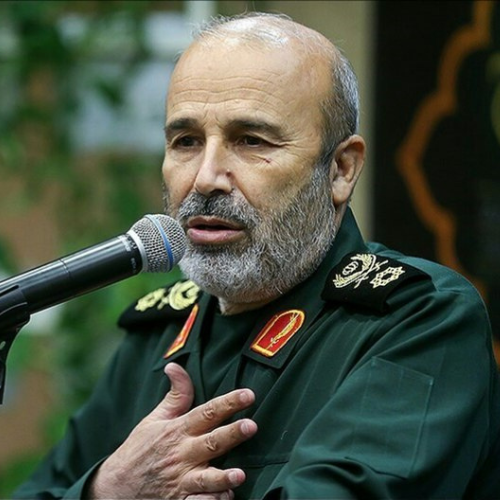Recent developments have cast a shadow over Iran’s influence in the Middle East, particularly within its key alliances, commonly referred to as the “Axis of Resistance.”
A Shaky Leadership in Hezbollah and the Axis of Resistance
This axis, composed of Iran, Hezbollah, and other regional allies, faces increasing challenges as Israel’s military operations and espionage activities target its leadership. A significant change occurred when Iran’s Supreme Leader, Ali Khamenei, appointed Brigadier General Mohammad Reza Fallahzadeh as Hezbollah’s new “supervisor.” This move highlights Iran’s efforts to maintain control over Hezbollah during a period of heavy losses.
The Struggles within the Axis of Resistance
The appointment of Fallahzadeh underscores the difficulties Iran faces in preserving its influence over Hezbollah, a crucial ally within the Axis of Resistance. Fallahzadeh, with his extensive military background in the Islamic Revolutionary Guard Corps (IRGC) and prior role as deputy commander of the Quds Force, takes over Hezbollah leadership as the group faces serious challenges.
Israel has targeted key Hezbollah leaders in recent weeks, including those overseeing combat operations, UAVs, and missile units. These losses have weakened Hezbollah’s operational capabilities and created a leadership vacuum that Iran is now scrambling to fill.
Espionage and Internal Struggles in the Axis of Resistance
Espionage within the Axis of Resistance further complicates Iran’s efforts to stabilize Hezbollah. Israel’s Mossad has reportedly penetrated Iran’s intelligence network, leading to high-level security breaches.
Notably, former Iranian President Mahmoud Ahmadinejad revealed that a secret intelligence unit in his administration was led by a Mossad agent. This has raised alarm within the IRGC, sparking concerns that key figures, such as IRGC Quds Force Commander Esmail Gha’ani, may have been compromised by Israeli intelligence. Gha’ani is reportedly under investigation due to suspected ties to Mossad, adding to the growing paranoia within the Iranian regime.
These espionage concerns have rattled the leadership of the Axis of Resistance. Hezbollah’s struggles, combined with the leadership crises within Iran, highlight a broader sense of instability. The alleged heart attack suffered by Gha’ani during interrogation and the high-profile assassinations of Hezbollah commanders have only heightened the uncertainty within the alliance. As a result, Supreme Leader Khamenei has reportedly gone into hiding after rumors of Hezbollah leader Hassan Nasrallah’s assassination surfaced, further demonstrating the fragile state of Iran’s influence.
Leadership Vacuums Weaken the Axis of Resistance
The growing leadership vacuum is a significant challenge for the Axis of Resistance. Khamenei now faces the difficult task of replacing key figures within Hezbollah while maintaining stability in the broader alliance. The death of former Iranian President Ebrahim Raisi has added to Khamenei’s concerns about succession planning, not only for Hezbollah but also for Iran’s future leadership. To navigate these challenges, Khamenei has increasingly relied on his son, Mojtaba, indicating a potential shift in the power structure within the Iranian regime.
Devastating Impact of US Sanctions: 25-Year-Old Helicopters Led to Iran’s Presidential Tragedy
The ongoing crises within Hezbollah and Iran reflect the weakening state of the Axis of Resistance. With its leaders either assassinated, compromised, or under investigation, Iran’s ability to project power and influence through its regional allies is increasingly questioned. The struggle to maintain leadership stability in Hezbollah, coupled with internal espionage threats, has significantly impacted the effectiveness of the Axis of Resistance in its fight against Israel and other regional adversaries. As the alliance faces mounting challenges, Iran’s grip on its proxy forces continues to loosen, raising questions about the future strength of the Axis of Resistance.


